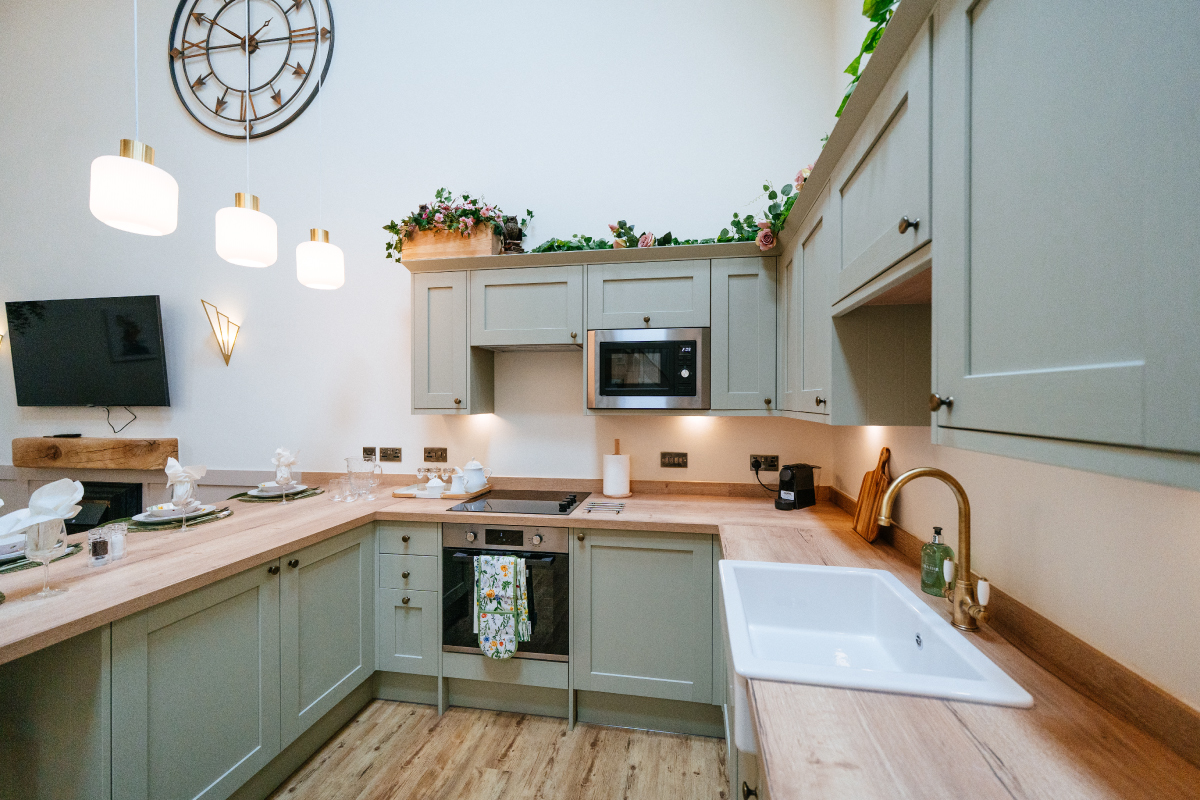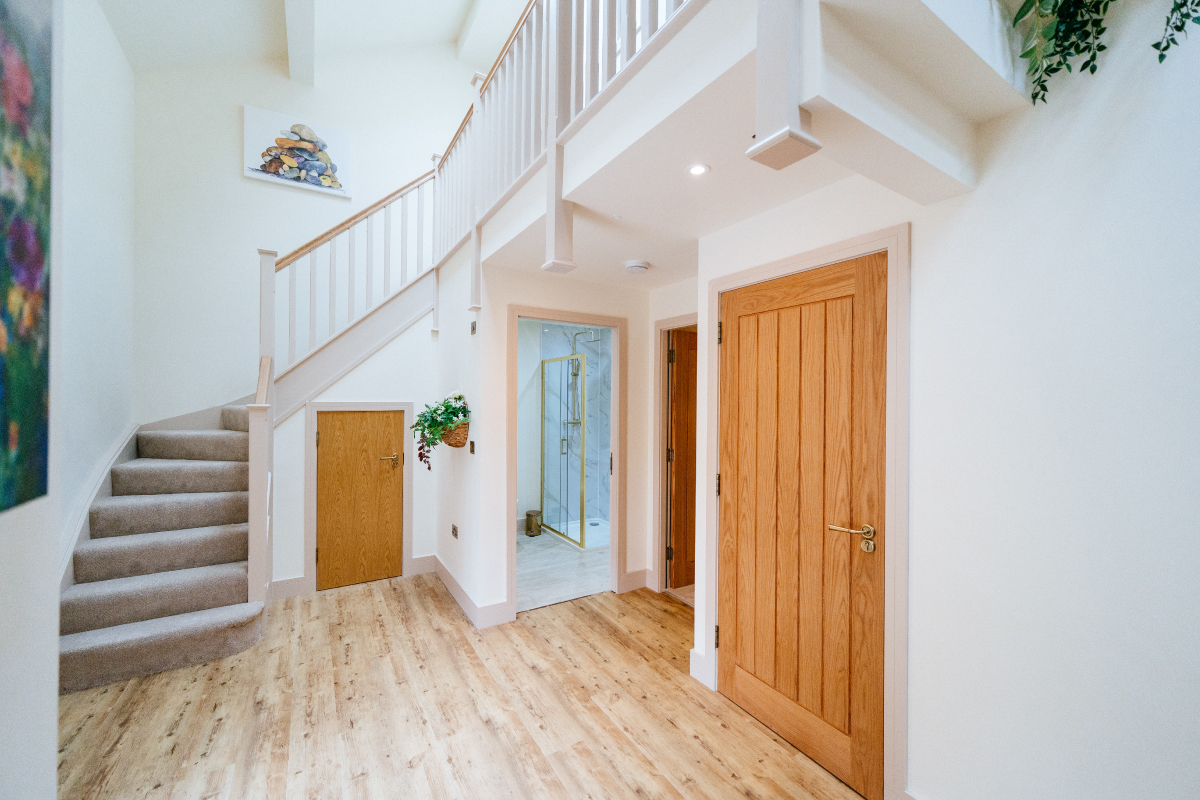The Stables
Welcome to our stylish 2-Bedroom Apartment – The Stables. The perfect retreat for families, friends, or business traveller’s looking for comfort and convenience in Lytham town centre.
Located in a prime area with easy access to local attractions, shops, and restaurants, our apartment provides all the amenities you need for a relaxing and enjoyable stay. With a modern design, comfortable furnishings, and plenty of space to unwind, you’ll feel right at home from the moment you arrive.
Check-in
-
Check-in from 3pm
-
Early check-in subject to availability
Check-out
-
Check-out 11am
-
Express check-out
-
Bigger Party? Why not take both apartments!
We would be delighted to reserve both apartments for you (subject to availability) if you require the extra space. The apartments do have an interconnecting door that remains locked when not in use but can provide a handy connection between the two to allow you and your friends and family to easily move between.
At the moment, we do not cater for Hen and Stag parties.
-
Historical Significance
It is believed that The Talbot, Clifton Street, Lytham was constructed between 1850 and 1870 as a public house. The pub was initially managed by Alexander Seed before being passed to Charles Brewster, who assumed the licence in 1873. It is clear that The Talbot, and its associated buildings, formed the heart of Lytham’s social and economic life during this time. A fact that has remained to this day, even following its conversion from a public house to retail stores, in the 1980’s. It is not easy to miss the imposing architecture of the building that sits proudly in the heart of Lytham’s high street.
At the rear of the building stands the former stables, which is where you can find our beautifully restored Airbnb’s today. This lovingly restored building is believed to be the oldest building in Lytham and is assumed to date back to the late 18th century.
The building is constructed using cobbles and red brick which harks to the vernacular architecture of the period. It is this construction that details the primary significance of this building, and therefore, explains its protected, listed status. This is a beautiful example of cobble wall construction typical of the Fylde in a pre-industrial age, before the advent of readily available mass-produced construction materials. And, although not totally unique to Lytham and the Fylde coast, this style is still reflected around the town centre today in the decorative, cobbled pavements that have been lovingly preserved and can be viewed just around the corner from us.
The two-storey building also features a large stable door to the rear, and original pitching holes for feed, detailing how the original building would have been used as a stable and coach house for the main public house. It does seem to have been used in later years as storage, and possibly, as the towns mortuary, though we can assure you, no spirits remain to disturb your cosy nights sleep!
-
Lytham and its place in History
Lytham, itself, has a far-reaching, and fascinating history. Spanning from the time of the Vikings and the creation of the Domesday book of 1086 where it is mentioned as “Lidun”, to its inception as a seaside resort in the 19th Century. Today it remains a popular seaside destination, and a haven of peace and tranquillity on the edge of the livelier, Blackpool.
The Fylde Coast, and the area upon where Lytham sits today, has been inhabited since the Bronze Age. In approximately 900 AD, Norse Vikings having been expelled from Dublin, sailed East to Chester, before moving through the Wirral, West Lancashire and beyond. They settled on the Fylde coast and established the regions of Kilgrimol and Kilgrimhow close to where the towns of Lytham and St Annes sit today.
Sadly, these settlements are now lost to tales and Folklore, with stories of the small settlements being washed out to sea or buried by the rising tides. It is thought that the sandy areas of Lytham and St Annes were used for trading, but, most notably the small Kilgrimol church had its own burial ground, and it is said that this site defined the western boundary of Lytham Manor. Lytham Manor was built around 1625 and now forms part of the Georgian-era, Lytham Hall.
In the late 12th century, Richard Fitz Roger granted his Lytham estates to the Benedictine monks of Durham, leading to the establishment of Lytham Priory. This small monastic community sat on the site of Lytham Hall and lasted until the Dissolution of the Monasteries in the 1530s when it was dissolved and became property of the Crown.
The site passed through several hands before it became the family seat of Cuthbert Clifton. He subsequently replaced the small manor house with the Hall as we know it today. This was designed by the architect John Carr of York whose other notable projects included Tabley House, Cheshire and Harewood House, West Yorkshire.
The 19th century saw Lytham’s transformation into a fashionable seaside resort, attracting visitors with its promenade and coastal charm. The neighbouring area of St Annes-on-Sea was developed during this period, further enhancing the region’s appeal as a tourist destination.






Two spacious bedrooms
One with a comfortable king-sized bed, and the other with two single beds or a double, perfect for all types of guests.


Open-plan living area
A bright and cosy lounge area with a flat-screen TV, comfortable seating, and a dining bar for family meals or evening relaxation.


Fully equipped kitchen
Cook your favourite meals with all the essentials, including a stove, fridge, microwave, kettle, coffee maker and dishwasher. Everything you need to feel at home.


Two Modern bathrooms
Clean and stylish bathrooms with a shower, excellent make-up mirror and lighting and fresh linens.


High-speed Wi-Fi
Stay connected with fast and reliable internet for work or leisure.


Private entrance
Hidden entrance provides privacy.


Original features
A host of original features including exposed beams, original doorway and round windows. What makes this apartment truly spectacular is the high vaulted ceiling – a feature we have lovingly restored, maintaining the original beams and truss.


Convenient location
Within walking distance to local shops, cafes, and public transport, making it easy to explore the best of Lytham Square and high street.


Accommodation
The Carriage House
Welcome to our charming 1-Bedroom Apartment – The Carriage House. It is the perfect retreat for solo traveller’s or couples looking for a cosy and stylish getaway.


